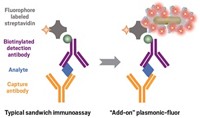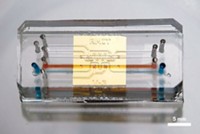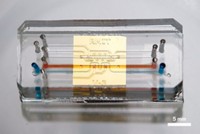Advertisement
Grab your lab coat. Let's get started
Welcome!
Welcome!
Create an account below to get 6 C&EN articles per month, receive newsletters and more - all free.
It seems this is your first time logging in online. Please enter the following information to continue.
As an ACS member you automatically get access to this site. All we need is few more details to create your reading experience.
Not you? Sign in with a different account.
Not you? Sign in with a different account.
ERROR 1
ERROR 1
ERROR 2
ERROR 2
ERROR 2
ERROR 2
ERROR 2
Password and Confirm password must match.
If you have an ACS member number, please enter it here so we can link this account to your membership. (optional)
ERROR 2
ACS values your privacy. By submitting your information, you are gaining access to C&EN and subscribing to our weekly newsletter. We use the information you provide to make your reading experience better, and we will never sell your data to third party members.
Analytical Chemistry
Cytokine Detection Illuminates Allergic Responses
New technique improves quantitation of multiple cytokines released from immune cells
by Stuart A. Borman
May 31, 2010
| A version of this story appeared in
Volume 88, Issue 22

A technique that detects and quantifies the release of multiple cytokines from immune cells, with 100 times more sensitivity than previously achieved, could enhance the ability to assess allergic responses (Lab Chip 2010, 10, 1391). Patients typically are tested for food allergies by monitoring for itching or redness at spots where potential allergens have been poked into the skin with a needle, or by analyzing blood for antibodies to specific allergens. J. Christopher Love of MIT and coworkers have now developed an alternative technique that is less invasive than skin tests and more multidimensional than antibody detection. The technique uses “microengraving,” a process that captures analytes and transfers them to glass plates, to detect and quantify multiple cytokines simultaneously. The cytokines, which can indicate allergic reactions, are produced by individual immune cells in microwells as a result of cell exposure to allergens. The technique could make it easier to track changes in allergic reactions over time, which is not currently routine. Love is testing this strategy in a collaborative study to monitor the treatment of children with milk allergies.





Join the conversation
Contact the reporter
Submit a Letter to the Editor for publication
Engage with us on Twitter